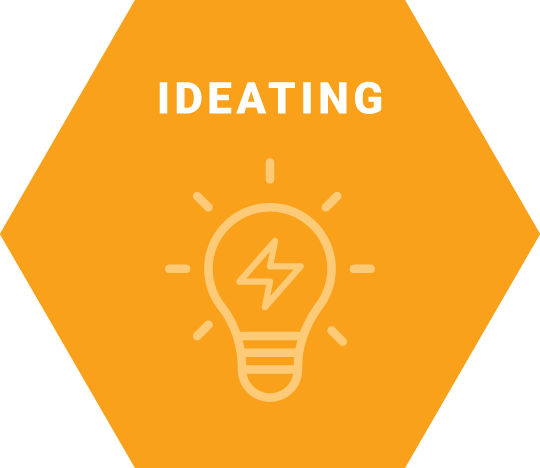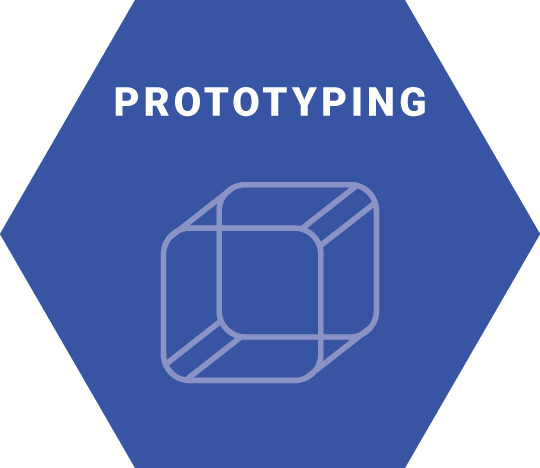| Module | Methods | Who | Where | When |
|---|---|---|---|---|
|
|
Stakeholder Analysis to identify the key parent groups we may want to involve. |
CPS project team, FACE (Family Community Engagement in Education) team. |
CPS office or virtually. | Week 1 One hour workshop. |
|
|
Five Why’s to explore assumptions and challenges related to parent involvement and set the stage for ideation with key stakeholders. |
CPS project team, FACE team and stakeholders such as CAC (Community Action Council) leaders. |
At schools or virtually. |
Week 2 One hour workshop. |
|
|
Round Robin to involve parents in addressing challenges with parental engagement with the school and to help increase parents’ comfort in sharing and building on each other’s ideas. |
CPS team and stakeholders identified during the Stakeholder analysis (especially those who may not typically participate). |
At schools or virtually. |
Week 3 Four hour workshop. |
|
|
Concept Poster to showcase the best combination of ideas based on the round robin exercise. These ideas can continually be updated and changed with input. |
CPS team and stakeholders identified during the Stakeholder analysis (especially those who may not typically participate). |
At schools or virtually. |
The objective of this plan is to encourage parental involvement with the school. You will identify who needs to participate in these sessions, explore assumptions, share and build on ideas, and analyze the information to identify what new ideas can be implemented.
|
|
Where:CPS office or virtually (Google Meets) |
When:Week: 1 |
Supplies Needed:
|
Framing / Stakeholder Analysis
Conduct a Stakeholder Analysis with the CPS project team and the FACE team in order to identify the key parent groups you may want to involve in the ideation of ways to encourage involvement among parents.
- Define the scope for the exercise.
- Generate a broad list of stakeholders who are involved or impacted in your problem frame.
- Capture each specific stakeholder on a separate sticky note.
- Transfer your sticky notes to a physical or virtual whiteboard.
- Organize them in a way that tells a story. This can show a process, or radiate out from a central stakeholder.
- Use visual cues such as color, arrows, circles and lines to show relationships and connections between stakeholders.
- Look for and fill in any gaps with impacted stakeholders you may have missed in your map.
- Prioritize your stakeholders.
- Each person votes for the 3-5 most critical stakeholders relative to your stated objective.
- Transfer the 10-20 stakeholders with the most votes to a 2 x 2 prioritization matrix.
- Force rank the stakeholders across the X axis based on how impacted they are by the problem. Your 10-20 stickies should be in a straight line, evenly distributed across the X axis.
- Force rank the stakeholder across the Y axis based on how influential they might be.
- Name each quadrant in the context of the problem you are exploring.
- Circle the top priority stakeholders who either would benefit the most from being present in the workshop or would provide a unique perspective and ideas in the workshop.
|
Who:
|
Where:CPS School or virtually (Google Meets) |
When:Week: 2 |
Supplies Needed:
|
Framing / Five Whys
Conduct a Five Whys exercise with the CPS project team, FACE team, Stakeholders, and CAC leaders in order to explore assumptions and challenges related to parent involvement and set the stage for ideation with key stakeholders.
- Use the Five Whys worksheet to conduct this exercise.
- Write your initial frame based on a previous Collective Mindmap, research, or personal experience.
- Come up with at least two explanations that answer the question, “Why is this happening?”
- For each of the problem frames identified in the previous step, Dig deeper and provide two more explanations for the occurrence of these problems.
- Review the frames you have identified and prioritize the one you would like to focus on.
- There is no wrong frame. Pick the one that best supports the team’s objectives. This could be based on impact, empowerment, resources, or context.
- Use this frame to help set up activities for the Round Robin and Concept Poster activities in the upcoming workshop.
|
|
Where:CPS School or virtually via Google meets |
When:Week: 3 |
Supplies Needed:
|
This workshop is designed to involve parents and other key stakeholders in the development of better ways to address challenges related to parental involvement. It will also act as a means for cultivating engagement and may increase stakeholder confidence and comfort in sharing their ideas with others.
Ideating / Round Robin
Facilitate a Round Robin exercise(s) with CPS team and Stakeholders. Conduct this exercise in 4-5 groups in order to involve parents in ideation addressing involvement challenges and opportunities and help increase parents’ comfort in sharing and building on each other’s ideas.
- Form groups of 4 - 5 people, with each group sitting at a separate table.
- Provide each person with markers, scratch paper, sticky notes, and a copy of the Round Robin worksheet.
- Share a prompt for ideation (related to the problem frame established in the Five Why’s exercise) with the whole group.
- Give a 5 to 10 minute overview of the challenge before you ask people to start ideating.
- Give 3 minutes for each person individually and silently to generate one initial idea around the prompt. Ask participants to capture this idea with drawings and words using the top box.
- Each person passes their sheet to the right, or all of the worksheets are gathered and redistributed to another table.
- Give 3 minutes for each person to critique the original idea in front of them, and capture their critique on the second box.
- Each sheet is passed again to a new person.
- Give 3 minutes for each person to improve on the original idea by addressing the most critical challenges captured in the previous round on the third box.
- Each person briefly shares their completed worksheet with the rest of their group.
- Have each group vote on their favorite ideas.
Prototyping / Concept Poster
In the same groups, create Concept Posters to showcase the best combination of ideas based on the Round Robin exercise. This will help reveal assumptions and different thinking on why parents don’t get involved at the school level, and potential ideas to increase their involvement. These ideas can continually be updated and changed with input, including details from the Round Robin exercise.
- Divide participants into small groups of three or four people maintaining the same groups if following a prior prioritization exercise.
- Provide groups with a separate work space, copies of the Concept Poster, copies of ideas from prioritization, markers, and plenty of scratch paper and sticky notes.
- Capture all the ideas that will be part of their group’s concept in the first box on the poster.
- Name the concept as if it were a new product or service hitting the market.
- Articulate the concept’s key benefits.
- Illustrate the concept as a mini storyboard, using the following steps as a guide.
- Begin your storyboard by illustrating and describing the problem the concept will address.
- Depict and describe how people will become aware of your concept.
- Show and describe how people will use key features of your concept.
- Show and describe how someone’s needs have been met due to the concept.
- Write one key assumption for each frame of the storyboard.
- Identify one or two key assumptions across the whole storyboard that are most critical to the success of the concept as a whole.
- One group presents the concept to the larger group in 3 minutes or less.
- For the next 2 to 3 minutes, discuss questions, feedback and reactions from the rest of the group.
- Repeat presentations and feedback discussions for each group.
- Each group uses this early feedback to make changes to their concept before continuing.



